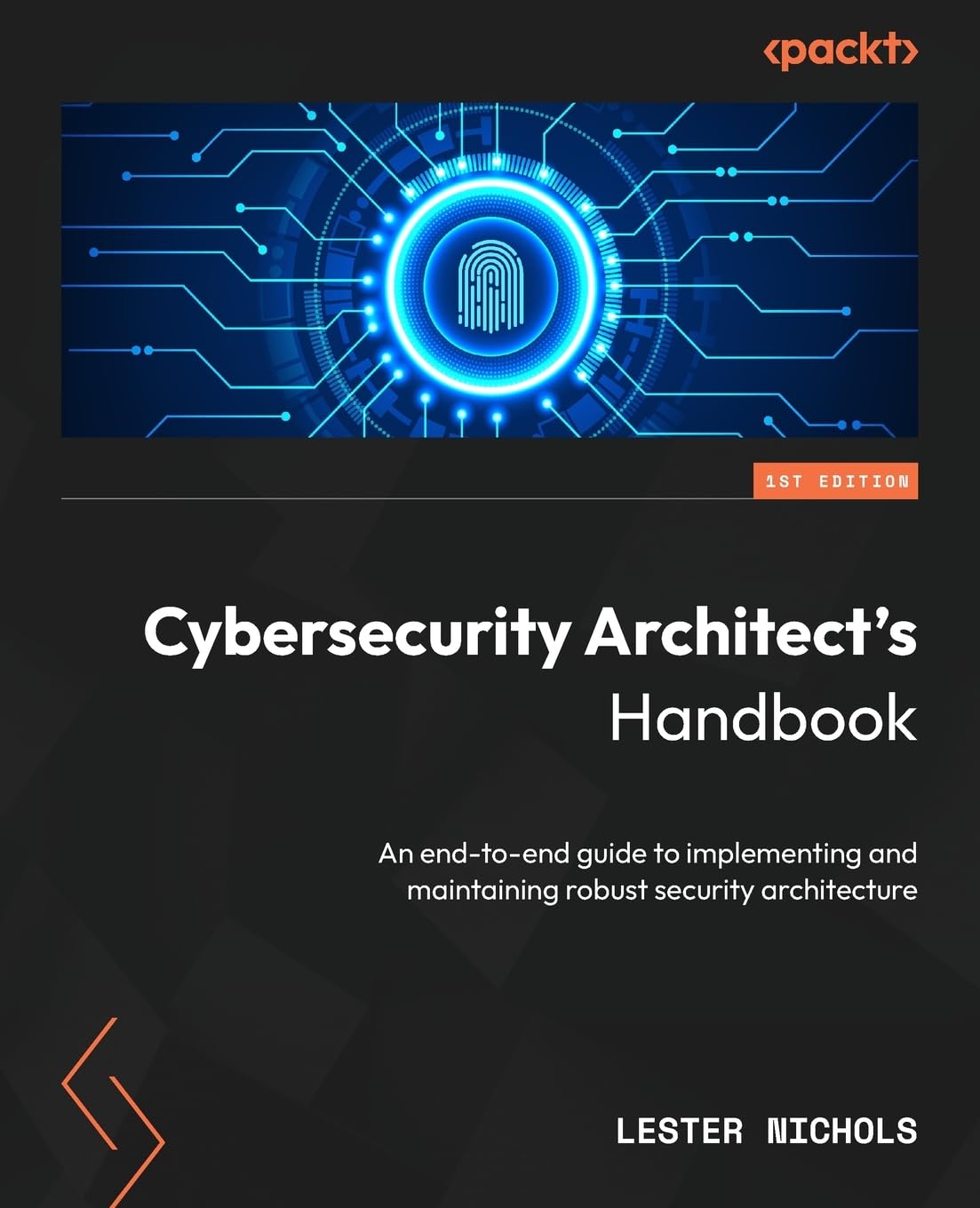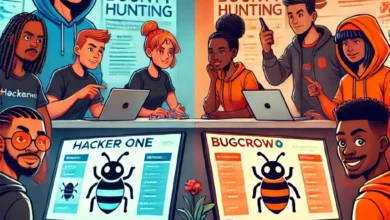Mastering the Bug Hunter's Arsenal: A Comprehensive Guide to Essential Tools
Elevating Your Cybersecurity Game: The Ultimate Toolkit for Aspiring Bug Bounty Hunters

The realm of bug bounty hunting is both exhilarating and demanding, presenting a unique blend of challenges that test the mettle of even the most adept cybersecurity enthusiasts. At the heart of every successful bug bounty hunter lies not just a keen understanding of cybersecurity principles but also a meticulously curated toolkit. This toolkit, comprising a variety of software tools, platforms, and resources, is indispensable for identifying, analyzing, and reporting vulnerabilities.
For millennials and aspiring ethical hackers eager to carve out their niche in the cybersecurity world, navigating the vast landscape of available tools can be daunting. This guide serves as your compass, illuminating the path to assembling an effective arsenal tailored to the nuanced demands of bug bounty hunting. From the indispensable vulnerability scanners that unearth potential security flaws to the network analyzers that dissect and understand traffic flow, each tool plays a pivotal role in the bug hunter’s quest.
Moreover, this journey into the ethical hacker’s toolkit goes beyond mere listings. It delves into the strategic use of these tools, offering guidance on how to leverage their capabilities to maximize your bug bounty-hunting efforts. Whether you’re dissecting web applications, probing networks, or coding scripts to automate tasks, understanding how to select, apply, and optimize your tools is crucial.
In the following sections, we will explore the essential categories of tools that form the backbone of any successful bug hunter’s toolkit. We’ll discuss the merits of vulnerability scanners, network analyzers, coding resources, cybersecurity forums, and more, providing a holistic view of the resources at your disposal. Accompanied by expert opinions and tips, this guide aims to equip you with the knowledge and confidence to select the right tools for various cybersecurity challenges, ensuring you’re well-prepared to step into the arena of bug bounty hunting.
Vulnerability Scanners: The Frontline of Your Arsenal
One of the cornerstone tools in a bug bounty hunter’s toolkit is the vulnerability scanner. These powerful tools automate the process of identifying potential vulnerabilities in systems, networks, or applications. By scanning through assets for known weaknesses, they provide a first glance at the security posture of a target, allowing hunters to prioritize their efforts effectively.
Popular Vulnerability Scanners:
- Nmap: Often the first tool out of the box, Nmap (Network Mapper) is not just a vulnerability scanner but a robust network exploration tool. It’s invaluable for mapping out network structures, identifying open ports, and detecting services running on a target system.
- OWASP ZAP (Zed Attack Proxy): Specifically designed for testing web applications, ZAP is an open-source tool that helps find a variety of security vulnerabilities in web apps as you use them. It’s particularly effective for beginners and integrates well with other tools for advanced users.
- Nessus: Known for its comprehensive database of vulnerabilities, Nessus is a highly versatile tool that can scan networks, systems, and applications for a wide array of security weaknesses, making it a staple in many professional settings.
Effective Use of Vulnerability Scanners:
- Customization and Configuration: Tailoring the scan settings to match the scope and depth required for your target can significantly enhance efficiency. For instance, configuring Nessus to perform a credentialed scan can yield deeper insights into system-level vulnerabilities.
- Integration with Other Tools: Leveraging the output of vulnerability scanners as input for other tools can streamline your workflow. For example, using Nmap’s scripting engine to automatically pass discovered services to more specialized vulnerability scanners or exploitation tools.
- Continuous Learning: Stay updated on the latest features and plugins. Tools like OWASP ZAP frequently update their vulnerability databases and scanning capabilities to cover new threats.
Network Analyzers: Understanding the Battlefield
Network analyzers, or sniffers, allow bug bounty hunters to monitor and dissect network traffic. This insight is crucial for understanding how data flows within a system or application and for identifying potential points of interception or data leakage.
Key Network Analyzers:
- Wireshark: The gold standard in network analysis, Wireshark provides deep visibility into the data traversing a network. It’s instrumental in diagnosing network issues, analyzing protocol implementations, and identifying suspicious traffic patterns indicative of vulnerabilities.
- Tcpdump: A command-line packet analyzer, Tcpdump offers a more lightweight, flexible solution for capturing and analyzing network traffic. Its simplicity and power make it a favorite for quick diagnostics and on-the-fly analysis.
Maximizing Network Analyzers:
- Filtering Traffic: Learning to use filters effectively can help isolate relevant data, reduce noise, and focus on potential security issues. For instance, filtering by protocol, port, or IP address in Wireshark can help pinpoint areas of interest.
- Decoding Protocols: Familiarize yourself with common protocols and their structures. Understanding the nuances of HTTP, DNS, and other foundational protocols can aid in recognizing anomalies or misconfigurations that could indicate vulnerabilities.
- Real-time Analysis: Utilize these tools in real-time to observe how applications and systems react to different inputs or attacks. This can provide invaluable insights into potential vulnerabilities and their exploitation.
By incorporating vulnerability scanners and network analyzers into your bug bounty toolkit and mastering their use, you equip yourself with the means to efficiently identify, analyze, and exploit potential vulnerabilities. These tools, when wielded with expertise and ethical consideration, can significantly enhance your effectiveness as a bug bounty hunter.
Coding Resources and Scripting Tools: Automating Success in Bug Hunting
The ability to automate repetitive tasks and customize attacks or tests is a significant advantage in bug bounty hunting. This is where coding resources and scripting tools come into play, enabling hunters to tailor their approaches to the unique challenges presented by each target. Mastering a few scripting languages and leveraging coding resources can exponentially increase your efficiency and effectiveness.
Essential Scripting Languages:
- Python: Renowned for its simplicity and power, Python is a favorite among bug bounty hunters for writing quick scripts, developing custom tools, or automating exploits. Python’s vast library ecosystem, including frameworks like Scapy for packet manipulation and Beautiful Soup for web scraping, makes it incredibly versatile.
- JavaScript: As the backbone of web applications, understanding and utilizing JavaScript is crucial for exploiting client-side vulnerabilities. JavaScript can be used to craft cross-site scripting (XSS) payloads or to manipulate DOM elements for testing web app security.
- Bash: For those working primarily with Linux systems, bash scripting can automate the scanning and enumeration processes. Simple bash scripts can chain together tools like Nmap, Grep, and Awk to filter and analyze data efficiently.
Leveraging Online Coding Resources:
- GitHub: A treasure trove of open-source projects, GitHub hosts numerous tools, scripts, and libraries developed by the cybersecurity community. Exploring GitHub can provide not only tools ready for use but also inspiration for your projects.
- Stack Overflow: When you’re stuck on a coding problem or looking for the best way to implement a solution, Stack Overflow offers a wealth of knowledge from other developers and security professionals. It’s a fantastic resource for troubleshooting and learning new techniques.
Real-World Application Examples:
- Automated Vulnerability Discovery: Using Python, a bug bounty hunter writes a script that automates the process of sending payloads to a web application to test for SQL injection vulnerabilities. The script systematically tests various input fields and logs responses indicative of a vulnerability.
- Custom XSS Payloads: Leveraging JavaScript, a hunter crafts custom XSS payloads tailored to the specific defenses of a target site. By understanding the site’s filtering mechanisms, the hunter can bypass security measures and demonstrate the impact of the vulnerability.
Enhancing Your Toolkit with Scripting:
- Scripting for Reconnaissance: Automate the reconnaissance phase with scripts that gather information from public sources, perform subdomain enumeration, and scan for open ports or services, saving valuable time in the initial stages of hunting.
- Developing Custom Exploits: When off-the-shelf tools fall short, scripting skills allow you to develop custom exploits that target specific vulnerabilities, giving you an edge in finding and demonstrating impactful bugs.
In the competitive arena of bug bounty hunting, the ability to automate tasks, customize your approach, and quickly adapt to new challenges is invaluable. By mastering scripting languages and utilizing the wealth of coding resources available, you can significantly enhance your bug hunting efficiency and effectiveness. Whether it’s automating reconnaissance, crafting bespoke payloads, or developing your security tools, the investment in coding skills pays dividends in your bug bounty hunting endeavors.
Cybersecurity Forums and Online Communities: Expanding Knowledge and Networks
In the realm of bug bounty hunting, knowledge sharing and community engagement are invaluable. Cybersecurity forums and online communities serve as hubs for exchanging ideas, discussing new vulnerabilities, sharing success stories, and seeking advice. Participating actively in these communities can accelerate your learning curve, keep you informed about the latest trends and threats, and open up networking opportunities with fellow security professionals.
Key Forums and Communities for Bug Bounty Hunters:
- HackerOne Community: HackerOne hosts one of the largest bug bounty platforms, and its community forum is a goldmine for bug hunters. From discussions on successful bug reports to advice on improving your hunting techniques, the community is an excellent resource for beginners and veterans alike.
- Reddit’s r/netsec and r/bugbounty: These subreddits are bustling with discussions on the latest security news, tools, and bug bounty tips. It’s a great place to ask questions, share findings, and connect with a diverse group of cybersecurity enthusiasts.
- BugBustersUnited Community: Joining the BugBustersUnited Community puts you in touch with a vibrant network of bug bounty hunters and cybersecurity researchers. It’s a place where members share their latest discoveries, tools, and write-ups, making it an invaluable resource for anyone looking to deepen their knowledge and skills in cybersecurity. Engaging within this community through discussions, queries, or collaborations can significantly broaden your understanding and network within the cybersecurity realm.
Leveraging Online Communities for Growth:
- Participate in Discussions: Don’t just be a passive observer; actively participate in discussions. Sharing your insights or asking thoughtful questions can help you stand out and build a reputation within the community.
- Learn from Shared Resources: Members often share tools, scripts, tutorials, and write-ups that can be immensely beneficial. Take advantage of these resources to expand your knowledge and toolkit.
- Collaboration Opportunities: Communities are great places to find collaborators for projects or study partners for cybersecurity certifications. Collaborating with others can offer new perspectives and deepen your understanding of complex topics.
Real-World Examples of Community Engagement:
- Joint Bug Hunting Projects: Two bug bounty hunters met through a cybersecurity forum and decided to collaborate on a web application testing project. By pooling their knowledge and resources, they identified critical vulnerabilities that neither would have found alone, leading to substantial bug bounties.
- Online Study Groups: A group of aspiring bug bounty hunters formed a study group on Discord to prepare for the Offensive Security Certified Professional (OSCP) certification. Through sharing study materials, discussing concepts, and practicing together, they created a supportive learning environment that benefited all members.
Engaging with cybersecurity forums and online communities is not just about accessing a wealth of knowledge; it’s about becoming part of a global network of individuals passionate about improving digital security. These platforms offer a unique opportunity to learn from the experiences of others, share your achievements and challenges, and grow both professionally and personally. By actively participating in these communities, you can stay at the forefront of the rapidly evolving cybersecurity landscape, enhance your bug bounty-hunting skills, and forge valuable connections that could shape the trajectory of your career.
Harnessing Your Toolkit for Bug Bounty Triumph
As we conclude this comprehensive exploration of the essential tools and resources pivotal for bug bounty hunting success, it’s important to remember that the journey doesn’t end here. The landscape of cybersecurity is perpetually evolving, with new vulnerabilities, techniques, and tools emerging regularly. Staying updated, continuously learning, and adapting your toolkit are crucial steps in maintaining an edge in the competitive field of bug bounty hunting.
Your Toolkit Is Just the Beginning:
The tools and resources outlined in this guide form the foundation of your bug bounty hunting endeavors. Whether you’re dissecting web applications for flaws, probing systems for vulnerabilities, or monitoring networks for breaches, the right toolkit empowers you to conduct thorough, effective security assessments. However, the true essence of bug bounty hunting lies not just in having the best tools but in knowing how to wield them creatively and ethically to uncover and report vulnerabilities.
Continual Growth and Community Engagement:
- Stay Informed: Subscribe to cybersecurity newsletters, follow relevant forums like BugBustersUnited Community, and participate in webinars and workshops to stay abreast of the latest tools and techniques.
- Practice Ethically: Always adhere to the rules of engagement for any bug bounty program you participate in. Ethical conduct not only upholds the integrity of the bug bounty hunting profession but also ensures the continued trust and cooperation between hunters and organizations.
- Share and Contribute: Consider sharing your findings, tools you develop, or any write-ups on platforms like the BugBustersUnited Community. Your contributions can help educate others, foster a culture of sharing, and enhance the collective knowledge of the cybersecurity community.
The path to becoming a successful bug bounty hunter is both challenging and rewarding. This guide aims to arm you with an understanding of the critical tools and resources necessary for your journey. Yet, the tools themselves are just one piece of the puzzle. Your curiosity, persistence, ethical considerations, and willingness to engage with and contribute to the cybersecurity community are what will truly define your success in this field.
BugBustersUnited invites you to share your experiences, challenges, successes, and insights with our community. Your journey, discoveries, and contributions enrich our collective understanding and strengthen our defenses against cyber threats. We encourage you to continue exploring, learning, and sharing as you advance in your bug bounty-hunting career.
Let’s foster a vibrant, informed, and collaborative cybersecurity community together. Your thoughts, questions, and suggestions are not just welcome—they are invaluable. Share them with us, and let’s collectively push the boundaries of what’s possible in the world of cybersecurity and bug bounty hunting.






